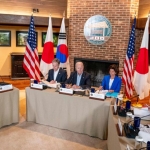
Japan is known for its culinary excellence and diversity, with more than 200 Michelin-starred restaurants in Tokyo alone. However, in recent years, many Japanese consumers, especially office workers, have been opting for ultra-cheap lunches that cost less than 500 yen ($4.30) as food prices continue to rise due to various factors, such as the war in Ukraine, supply chain disruptions, and the Covid-19 pandemic.
According to a survey by the social lending service Lendex, nearly half of Japanese salarymen aged between 20 and 50 spend less than 500 yen a day on lunch, with 22.6% settling for a “one-coin lunch” that costs only 100 yen ($0.86).
These ultra-cheap lunches can be found at various eateries, such as gyudon (beef bowl) chains, ramen shops, curry houses, and even some Michelin-starred restaurants that offer discounted lunch sets.
The ultra-cheap lunch trend reflects the frugality and pragmatism of many Japanese consumers, who are facing stagnant wages, rising living costs, and uncertain economic prospects. It also reflects the competitiveness and creativity of many Japanese restaurants, who are trying to attract and retain customers by offering affordable and satisfying meals.
The challenges and opportunities for Japan’s restaurants
The ultra-cheap lunch trend poses both challenges and opportunities for Japan’s restaurants, especially those that are known for their high-quality and high-priced dishes. On one hand, the trend puts pressure on their profit margins and reputation, as they have to lower their prices and standards to meet the demand. On the other hand, the trend also offers them a chance to expand their customer base and showcase their skills and specialties.
Keep Reading
Some Michelin-starred restaurants, such as Pizzeria e Braceria L’Insieme, a pizza restaurant in Kameido that has one Michelin star, have embraced the ultra-cheap lunch trend by offering pizzas for as low as 1,300 yen ($11.20), which is about half the price of their dinner menu. The owner and chef, Shunsuke Matsumaru, said that he wanted to make his pizzas accessible and enjoyable for everyone, and that he did not compromise on the quality or the quantity of the ingredients.
Other Michelin-starred restaurants, such as Sushi Kanesaka, a sushi restaurant in Ginza that has two Michelin stars, have resisted the ultra-cheap lunch trend by maintaining their high prices and standards, even during lunchtime. The owner and chef, Shinji Kanesaka, said that he wanted to preserve the tradition and the art of sushi, and that he did not want to lower his expectations or the expectations of his customers.
The future of the ultra-cheap lunch trend
The ultra-cheap lunch trend is likely to continue and evolve in the future, as Japan’s food prices and economic conditions remain uncertain and challenging. However, the trend may also face some changes and limitations, as Japan’s consumers and restaurants become more aware and concerned about the environmental and social impacts of their food choices, such as food waste, carbon footprint, and labor rights.
The ultra-cheap lunch trend may also coexist and complement other food trends, such as the premium lunch trend, which involves spending more than 1,000 yen ($8.60) on lunch, and the healthy lunch trend, which involves choosing more nutritious and balanced meals. These trends reflect the diversity and the sophistication of Japan’s food culture, which can cater to different tastes, preferences, and budgets.
The ultra-cheap lunch trend is a phenomenon that reveals the realities and the aspirations of Japan’s consumers and restaurants, who are trying to cope and thrive in a changing and challenging world. The trend is not only a matter of price, but also a matter of value, quality, and satisfaction. The trend is not only a reflection of the present, but also a projection of the future.

























